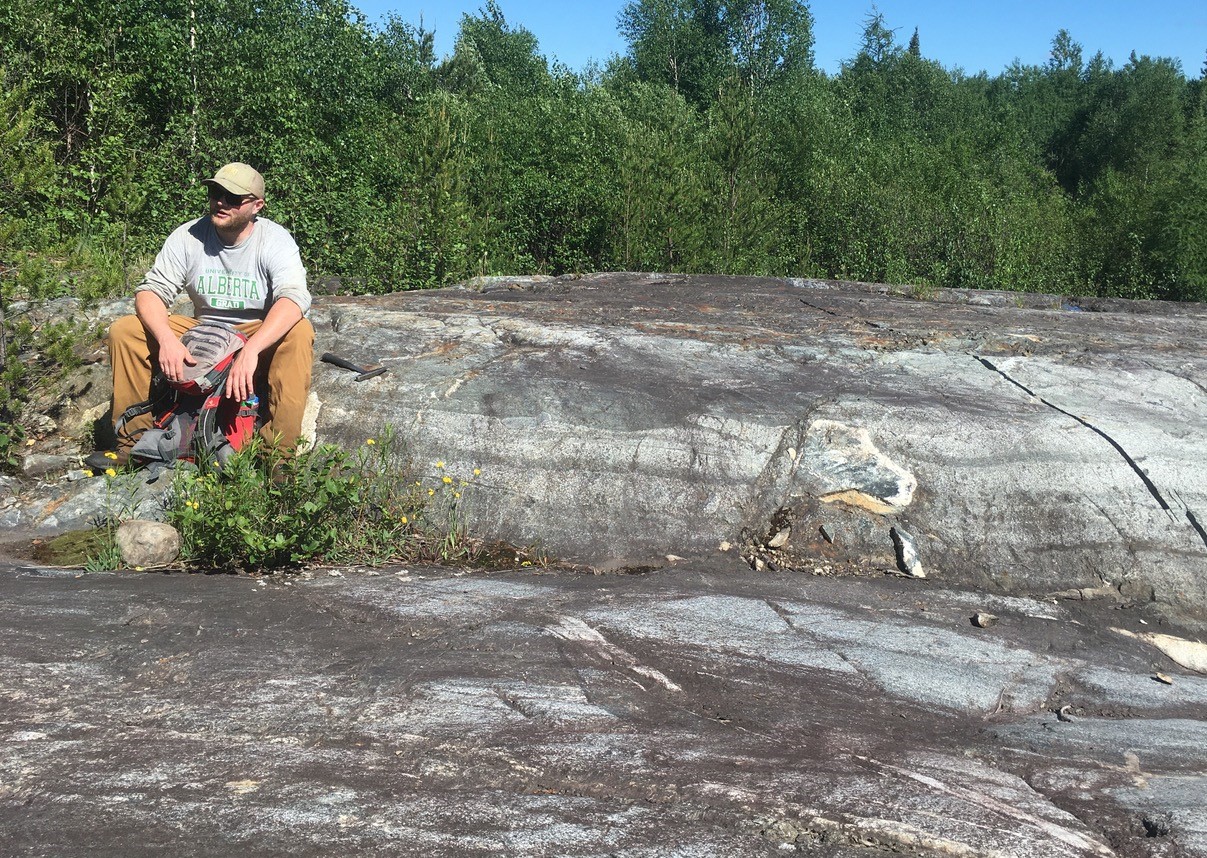Research in Action: Research Partnership with mine, a win-win for all parties
Published in The Chronicle Journal Thursday, June 9, 2022
BY JULIO HELENO GOMES
Collaborations between industry, government, and universities are nothing new. But a multimillion-dollar investment involving Impala Canada, NSERC, the province and Lakehead University is yielding benefits both in the mine and in the laboratory.
Thanks to nearly $2-million in contributions, Lakehead researchers led by Dr. Peter Hollings will be working at the Lac des Iles (LDI) mine, northeast of Thunder Bay, helping parent company Impala Canada understand more about the mineral deposits there while also giving the next generation of geoscientists invaluable hands-on training.

“I think it’s a really good model of how we can take industry funding and leverage it through government support to do some really amazing research,” says Hollings, the Northern Ontario Heritage Fund Corporation (NOHFC) Industrial Research Chair in mineral exploration. “It will help us build Lakehead University and the Geology department into a hub for mineral deposit research. We are building a large team of graduate students and postdoctoral fellows in the department, with the LDI group forming the core of that team.”
The industrial research chair was announced in early 2021. The province committed $690,000 from the Northern Ontario Heritage Fund, which was matched by Lakehead University, and $375,000 from Impala Canada, as well as matching grants from NSERC to fund Hollings' position and a research team. The industrial chair designation means Hollings can devote more time to the work at LDI mine, and other research projects in Northern Ontario.
Investing in mineral exploration and geological research at Lakehead University is an investment in Impala Canada’s future, says a senior company official.
“Dr. Hollings and his graduate students pursue relevant studies that help us better understand the formation of the Lac des Iles palladium deposits as well as the potential opportunities in the regions in which we’re operating,” states Allison Henstridge, Impala Canada’s vice-president of Technical Services and Projects. “The more we learn about these insights the better we are able to plan for a sustainable future, benefitting our employees, the communities nearby and the surrounding economies.”
In a broad sense, Hollings and the graduate students will try to understand how deposits of mostly nickel, copper and platinum group elements came to be where they are at LDI and other satellite intrusions.
“That will help the company focus and target their exploration, not only around the mine, to expand the life of the mine, but to find new deposits,” Hollings says. “LDI is predominantly a palladium deposit, but when you find palladium you find other platinum group elements.”
Generally, the researchers take samples from the field, and bring them back to the lab to study the geochemistry. They use various techniques to look at trace elements, such as sulphur isotopes, to understand the process by which metals are concentrated.
“We are also looking at some of the other deposits, which to date don’t have enough metal to make them worth mining, to understand why they’re different,” Hollings explains. “Can we come up with signatures that the company can use to very quickly say, ‘OK, this one is not going to work for us, it’s not enough metal, whereas this one maybe will and we should focus our efforts on exploring that particular area.”
Most of the exploration is centred on the mine footprint. Located off Highway 527, about 85 kilometres from the city, LDI is an open-pit and underground operation that produces palladium, which is used as fuel cells in cars and buses, as well as in jewellery and dental fillings. The mineralization there is described as “rarely visible and unpredictable.”
The early phase of this five-year arrangement is coming to an end, with master’s student Justin Jonsson now completing his thesis. Other graduate students, as well as post-doctoral fellow Wyatt Bain, are working on different projects.
Hollings credits Impala Canada with allowing them onto the LDI property, particularly in light of the stringent requirements at the height of the COVID pandemic.
“Impala Canada has been an amazing partner throughout the project, they have been incredibly supportive of the research, not only with funding but also in getting students access to the mine,” he says. “Even through COVID they’ve worked really hard to ensure the research kept going. They’ve been an excellent partner in that respect.”
Research in Action highlights the work of Lakehead University in various fields of research.

